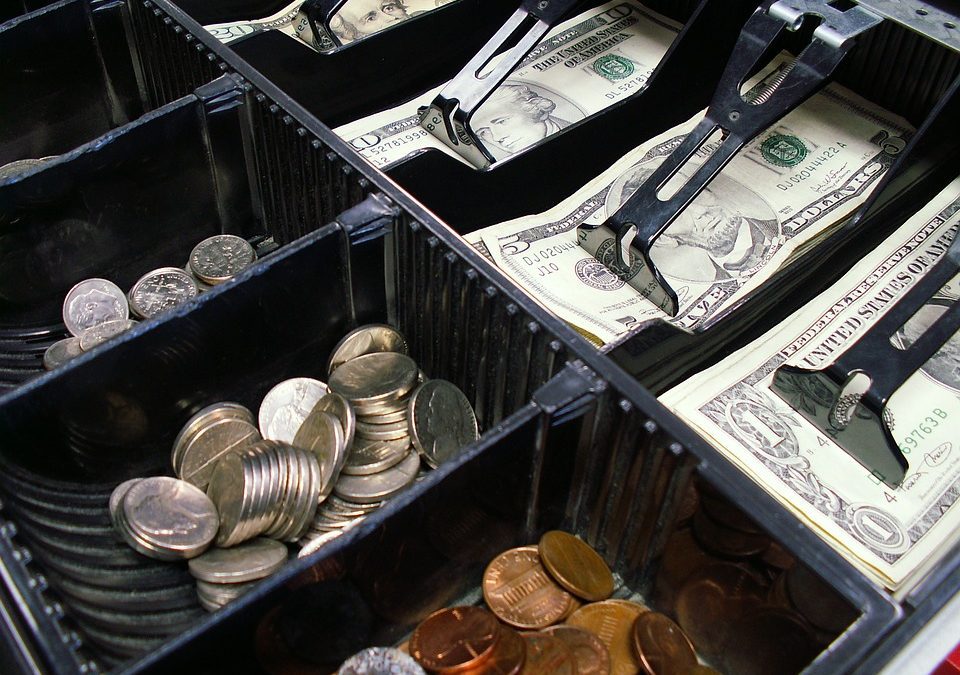Markup vs Margin: How to Define and Calculate
Post on Wednesday, December 13th, 2017 in Accounting

Basically, both markup and margin reflect relationships between cost and price, but this reflection is not the same for markup and margin. Taking a closer look at margin vs. markup shows how these two similar words represent somewhat different concepts.
In this article you will learn how to calculate markup percentages, how to make margin calculation, and how you can use markup to adjust your prices to run a more successful, streamlined business.
Before moving forward, it is important to note that the concepts of markup and margin depend on how you price your goods. Pricing depends on whether you are a retailer or a wholesale vendor, how you buy your products – from a single supplier or from several suppliers, at one price or at different prices—and so on.
But in most cases, you will use cost to define your price. And this is where the need for the markup and margin calculation arises.
On the surface, it seems like a difficult concept to wrap your head around. But it’s actually quite simple. Here, these concepts will be put into simple terms.
How to Calculate Markup
So, first of all, let’s define markup.
A markup is a percentage that is added to the cost price of goods and includes overhead expenses, such as additional time and money factors that add into manufacturing process or the shipment of the goods. In addition to overhead costs, it also accounts for profit.
How to calculate markup percentages?
To calculate markup, simply subtract the cost of your goods from the price, and then divide by cost. Below is the simple formula for calculating markup percentages:
Price – Cost
—————————
Cost
For example, a company that prints on T-shirts is regularly buying blank T-shirts from a vendor for $10 each, and then, after printing, is selling each T-shirt at $25.
The mark up calculator will show the following values:
25 – 10
——————————— = 1.5 or 150% markup percentage
10
There is also a reverse formula with which you can define a price on the basis of markup:
Cost + Cost x Markup = Price
Accordingly, if we already know that our markup is 1.5, our markup price will be as follows:
10 + 10 x 1.5 = 25
Depending upon what you’re selling and in what quantities, this can be complicated. But in the most basic terms, this is how you calculate markup.
Calculating Margin
Now that you have an understanding of what markup is as well as how to calculate markup percentages, let’s define a margin.
A gross profit margin is the proportion of money that remains from revenues after accounting for the cost of goods sold. It helps you determine the actual profit that you are making on each sale.
And here is the sales margin formula:
Price – Cost
—————————
Price
As you see, the gross margin percentage formula looks pretty similar to the markup formula. However, this time we subtracted the cost of goods from the price, and then divide by price. If we take our previous example with T-shirts, the profit margin percentage will be as follows:
25 – 10
——————————— = 0.6 or 60% margin
25
This is the product margin formula. Again, this is just the basic calculation and it may be more intricate, depending upon what you’re selling and in what quantities.
Gross Margin vs. Gross Profit
Both gross margin and gross profit define the revenue of a company, but they’re often used differently by different industries.
Let’s make it simple.
Gross profit can be considered the net sales minus the cost of goods sold, which is the direct costs it takes to make a product.
How do you calculate gross margin, then? Just divide the profit by costs.
Revenue – Cost
———————————
Cost
For example, if you sell T-shirts at $10 apiece, but it costs $8 to make each one, your gross profit would be $2, and your gross margin would be 25%.
Here’s how that looks:
10 – 8
——————————— = 25%
8
Margin vs. Markup: When to Use Each
You can use the margin and markup depending on your business, its size, and the stage that it is in. If you are just starting off, then it is better to use markup to know the revenue that your sales bring. Later on, when your business gets up on its feet, you can start calculating gross margin to be aware of the actual profit from your sales.
A markup is a variable value, meaning that you should adjust it along with the growth of your business. However, you can use a fixed markup and base your prices on it as the costs change. For this purpose, you can use the abovementioned “reverse” formula:
Cost + Cost x Markup = Price
For example, if the T-shirt acquisition will cost the company $15 instead of $10 while the margin will still remain 1.5, then the price will change as follows:
15 + 15 x 1.5 = $37.5
Now you know how the markup calculator works. You have an understanding of the sales margins formula and of how to calculate profit percentage. We hope that this knowledge will help you grow a successful business.
How Dynamic Inventory Can Help
Dynamic Inventory can make sure that you’re not crunching numbers.
It offers a range of features that will help you calculate markup, margin, and sales price of your products quickly and painlessly. If the costs change, you can easily adjust the prices of your product based on your predefined markup percentage.
Browse our website to learn more about how the Dynamic Inventory software program can help you improve your inventory workflow. Or contact us today and let us schedule a personal demo for you, so you can evaluate all of the features.

Adam is the Assistant Director of Operations at Dynamic Inventory. He has experience working with retailers in various industries including sporting goods, automotive parts, outdoor equipment, and more. His background is in e-commerce internet marketing and he has helped design the requirements for many features in Dynamic Inventory based on his expertise managing and marketing products online.
Learn how Dynamic Inventory can streamline your business today!
Schedule a DemoRelated Articles
see all
Use This Formula to Calculate Economic Order Quantity (EOQ)
For many businesses, inventory is the biggest asset. These companies must have enough inventory to satisfy the demand of their …

Moving Average Formula For Inventory Costs
Product cost variations affect the value of inventory and complicate the process of calculating costs of goods sold. For SMBs …

A Look Inside Starbucks’ Seamless Supply Chain
After almost 50 years in business, Starbucks now has more than 25,000 retail stores across six continents with annual revenue …

